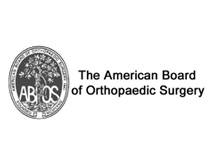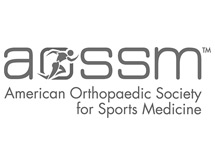Labral Repair
Labrum Anatomy
The labrum is a ring of strong fibrocartilaginous tissue lining around the socket of the hip joint. Labrum serves many functions where it acts as shock absorber, lubricates the joint, and distributes the pressure equally. It holds the head of the femur in place and prevents the lateral and vertical movement of the femur head within the joint. It also deepens the acetabular cavity and offers stability against femoral head translation.
Labral Tear
Labral tear may be caused by trauma, femoroacetabular impingement (FAI), hip hypermobility, dysplasia, and degeneration. It is one of the rare conditions and is common in athletes playing sports such as ice hockey, soccer, golf and ballet. Structural abnormalities may also cause hip labral tear. Patients may have hip pain, clicking and locking of the joint and restricted range of motion. Patients may also experience a dull pain on movement of the hip joint that may not subside on rest. Hip labral tear is often diagnosed with symptoms, history, physical examination and radiological techniques. Magnetic resonance arthroscopy may be more appropriate for diagnosing hip labral tear.
Labral Treatment
Treatment for a hip labral tear will vary depending on the severity of the condition. People with a minor labral tear recover within a few weeks with the help of non-surgical treatments.
Conservative treatments include:
Medications: Anti-inflammatory medications can be helpful in relieving pain and reducing inflammation associated with labral tears. Your doctor may also recommend cortisone injections to alleviate the pain associated with a hip labral tear.
Physical therapy: Physical therapy that helps to improve hip range of motion, strength, and stability are also recommended.
However, severe cases may require arthroscopic surgery to remove or repair the torn portion of the labrum.
Labral Repair
Hip arthroscopy, also referred to as keyhole surgery or minimally invasive surgery, is a surgical procedure in which an arthroscope, a narrow tube with a tiny camera on the end, is used to assess and repair damage to the hip.
The surgery is performed with the patient under general, spinal or local anesthesia.
Your surgeon will make 2 or 3 small incisions around the hip joint area. The arthroscope is inserted into the hip joint through one of the incisions to view the labral tear. The camera attached to the arthroscope displays the image of the joint on the monitor. A sterile solution will be pumped into the joint in order to have a clear view and room to work. Through the other incisions specially designed instruments are inserted. Your surgeon repairs the torn tissue by sewing it back together or removes the torn piece all together, depending upon the cause and extent of the tear. After the completion of the procedure, the arthroscope and instruments are removed and the incisions are closed.
Post-Operative Care for Labral Repair
Following the surgery, you will be given instructions on caring for your incisions, activities to avoid and exercises to perform for a fast recovery and a successful outcome. Physical therapy will be recommended by your doctor to restore your strength and mobility. Your doctor will also prescribe pain medications to keep you comfortable.
Risks and Complications of Labral Repair
Possible risks and complications specific to arthroscopic hip surgery include:
- Infection
- Deep vein thrombosis (DVT)
- Blood vessel or nerve damage
- Hemarthrosis (bleeding inside the joint)
- Failure to relieve pain










